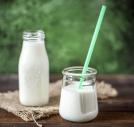Diabetes Meal Plans: What Are The Best Foods To Eat And Which Ones To Avoid?
A diabetes meal plan is a guide indicating what types of foods, and how much of them, people should eat at meal and snack time. Following a meal plan helps people improve their blood glucose levels, blood pressure, cholesterol numbers, and facilitates weight management. Consuming the right foods - plus regular exercise - improves overall health, and may prevent diabetes complications.
The Basic Idea
Typically, a doctor or dietitian helps an individual with diabetes create a meal plan suited to their needs, utilizing one of several effective meal planning tools such as carb counting, glycemic index, or the plate method.
Diabetes meal plans generally ensure that people eat:
- Healthy Carbs. Complex carbohydrates are emphasized in diabetes meal plans. This includes a wide variety of non-starchy vegetables, whole grains, whole fruits, legumes, and low-fat diary products.
- Plenty of Fiber. Dietary fiber helps control blood sugar levels, and lowers the risk of heart disease. High fiber foods include fruits, vegetables, whole grains, nuts, and legumes such as beans, lentils, and peas. li>
- Heart Healthy Proteins. Lean red meats, poultry, and certain fish are part of most diabetes meal plans. Fish that is rich in omega-3 fatty acids (e.g., tuna, salmon, mackerel) also facilitate good cardiovascular health.
- Healthy Fats. Consuming mono and poly unsaturated fat is generally recommended. This includes foods such as avocados, olives, walnuts, pecans, and almonds, plus olive and peanut cooking oils.
Foods to be avoided or limited are those high in saturated fat, cholesterol, and sodium since they put us at increased risk for heart disease and stroke. Products containing trans fats should be avoided completely.
Sample Daily Plan
Meal plans should accommodate a person’s size and physical activity level, so the daily menu of someone needing 1,200 to 1,600 calories per day will look something like this:
- Breakfast: Whole-wheat pancakes, one piece of fruit, and 6 oz nonfat vanilla yogurt.
- Lunch: Cheese and veggie pita, a medium apple smeared with a couple tablespoons almond butter.
- Dinner: Beef stroganoff, 1/2 cup cooked carrots, a side salad (1 1/2 cups spinach, half a tomato, 1/4 cup chopped bell pepper, 2 tsp olive oil, 1 1/2 tsp red wine vinegar).
- Snacks: two unsalted rice cakes covered with an ounce of light spreadable cheese, or an orange with 1/2 cup low-fat cottage cheese.
Sticking with a recommended meal strategy is the best way for those with diabetes to keep their blood glucose under control and prevent complications, so talk to a doctor or dietitian if your current plan is not working for you.
Sources: American Diabetes Assoc, Mayo Clinic
Photo: Pexels



































